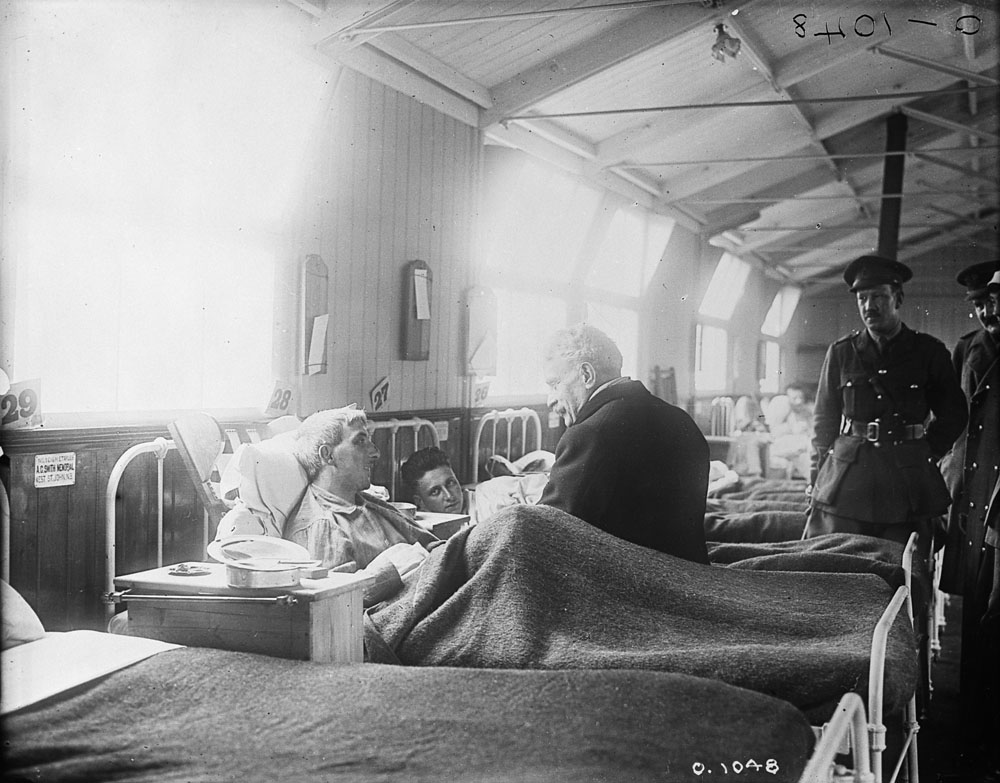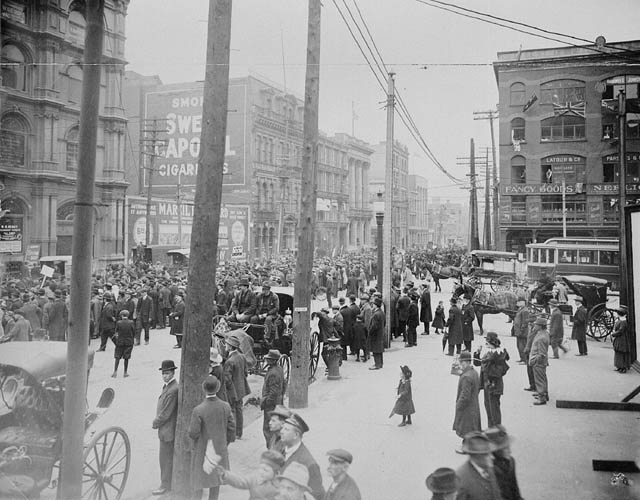How Do You Prove Mitary Service In Canada
The Military Service Act became constabulary on 29 August 1917. Information technology was a politically explosive and controversial police force that bitterly divided the land along French-English lines. It made all male citizens aged xx to 45 bailiwick to conscription for armed services service, through the finish of the Showtime World State of war. The Act's war machine value was questionable, simply its political consequences were clear. It led to the cosmos of Prime Minister Borden's Union Government and drove most of his French-Canadian supporters into opposition.
The Armed services Service Act became law on 29 August 1917. It was a politically explosive and controversial law that bitterly divided the country along French-English lines. It made all male citizens aged xx to 45 subject to conscription for military service, through the stop of the First World State of war. The Deed's military value was questionable, but its political consequences were clear. It led to the creation of Prime Minister Borden's Union Regime and drove most of his French-Canadian supporters into opposition.

Reinforcements Needed
More than 300,000 Canadians signed upwardly to fight overseas in the first ii years of the Beginning World War. This was a huge number for a land of only eight million people. Past the end of 1916, even so, volunteering had almost stale upward. Canada did not have plenty recruits to reinforce the Canadian Expeditionary Force. The Force's numbers were existence depleted past the awful cost of the fighting in France and Kingdom of belgium.
After returning from a visit to French republic in the spring of 1917, Prime number Government minister Robert Borden was shocked by the enormity of the conflict. He was determined that Canada should play a significant role in the war and announced that compulsory service would exist necessary.

Conscription Fence
The debate over conscription consumed and divided the country. Some French Canadians supported it and some English Canadians did not; but for the near part, English Canada backed Borden on conscription while other groups were opposed. The opponents were primarily farmers (who disliked the recruitment of their labouring sons); trade unionists; not-British immigrants; pacifists; and most of French Canada, including almost every French-speaking Fellow member of Parliament. Riots over the issue broke out in Quebec, where support for the war had always been lukewarm.
Liberal Opposition leader Sir Wilfrid Laurier refused to endorse Borden's call for a unified, coalition government on the matter. Nevertheless, Borden managed to button the Military Service Human action through Parliament; information technology became police force on 29 August 1917. It made all male citizens aged 20 to 45 subject to call-up for military service, through the end of the state of war.

"If we do non pass this measure out," Borden had told Parliament, "if we practice not provide reinforcements, if we exercise not keep our plighted organized religion, with what countenance shall we meet (the soldiers) on their render?"
A few weeks later on, in preparation for a federal election, Borden cobbled together a Union Authorities. It was made up largely of English language-speaking Conservatives, Liberals and independents. The election of December 1917, known equally the "Khaki Ballot" (after the colour of the army's uniforms), was fought on the issue of conscription. It was a bitter contest that the Unionists won; they received a large majority in the Firm of Commons.

The Human activity and Indigenous Peoples
The Military Service Act initially included Status Indians and Métis men between the ages of 20 and 45. At that time, "Status Indians" were First Nations peoples with official Indian condition registered with the Department of Indian Diplomacy. Yet, some Starting time Nations leaders challenged conscription on the grounds that information technology violated treaties between the Crown and Ethnic peoples; they as well argued that men who did not accept the correct to vote should not be forced to fight in overseas wars.
Every bit a outcome, Ethnic peoples (both treaty and non-treaty peoples) were exempted from the Act in January 1918. But fifty-fifty though they were not conscripted, more than 4,000 Starting time Nations men volunteered for overseas service between 1914 and 1918. This was in addition to the many Métis and Commencement Nations soldiers who volunteered without identifying every bit Indigenous. (Run into also Indigenous Peoples and the Globe Wars.)

The Human activity and Black Canadians
The Military Service Human activity too practical to Black Canadians, many of whom faced opposition when they tried to enlist before in the state of war. (Meet Black Volunteers in the Canadian Expeditionary Forcefulness and No. 2 Construction Battalion.) Despite this, most Blackness Canadians registered for military service. At least 350 were drafted into the CEF and 220 were sent overseas. The majority were assigned to the Canadian Forestry Corps, which also employed most Blackness volunteers. At least 28 Black conscripts served in frontline units during the Hundred Days Campaign, iii of whom lost their lives. (See Black Canadians and Conscription in the First World State of war.)
Significance
The War machine Service Act was unevenly administered. There were numerous evasions past called-up recruits, and many exemptions were granted. Thousands of young men refused to even register for the selection process. Of those that did register, 93 per cent asked for exemptions.
Call-ups began in January 1918. In total, 401,882 men registered for conscription and 124,588 were drafted to the Canadian Expeditionary Forcefulness. Of those, 99,651 were taken on force, while the rest were found unfit for service or discharged. In full, 47,509 conscripted men were sent overseas and 24,132 served in France. Conscript soldiers were a minor portion of the 425,000 Canadians who served overseas throughout the war; but they helped bolster the depleted divisions of the Canadian Corps during the final, of import battles of 1918.
The Human action's military machine value has been debated, but its political consequences were clear. It led to the creation of Prime number Minister Borden's Union Authorities and collection nearly of his French-Canadian supporters into opposition. French Canadians were seriously alienated past this endeavour to enforce their participation in what they considered a British imperial war. More broadly, the conscription crisis bitterly divided the country along French–English lines.
How Do You Prove Mitary Service In Canada,
Source: https://www.thecanadianencyclopedia.ca/en/article/military-service-act
Posted by: baumobee1968.blogspot.com


0 Response to "How Do You Prove Mitary Service In Canada"
Post a Comment